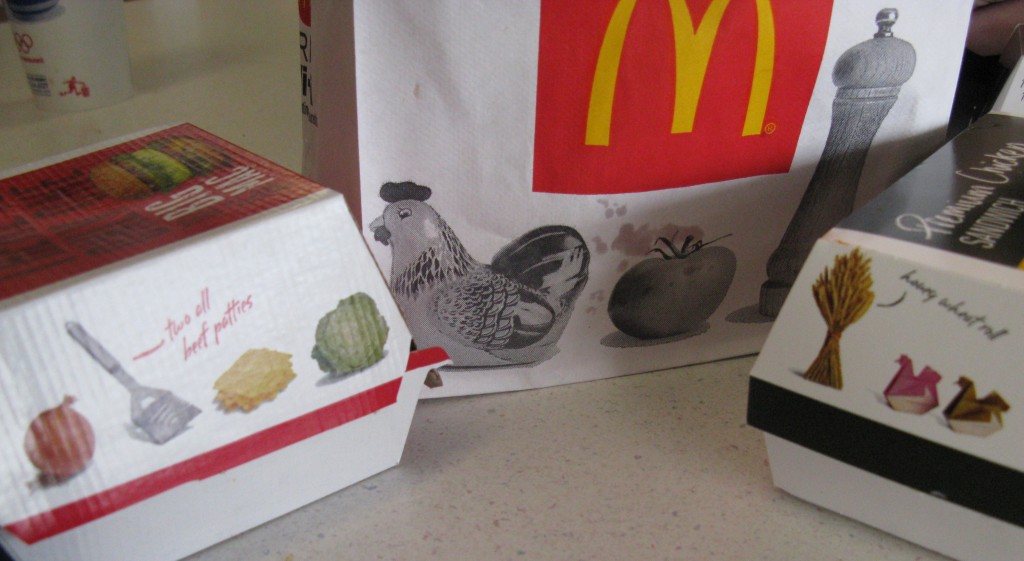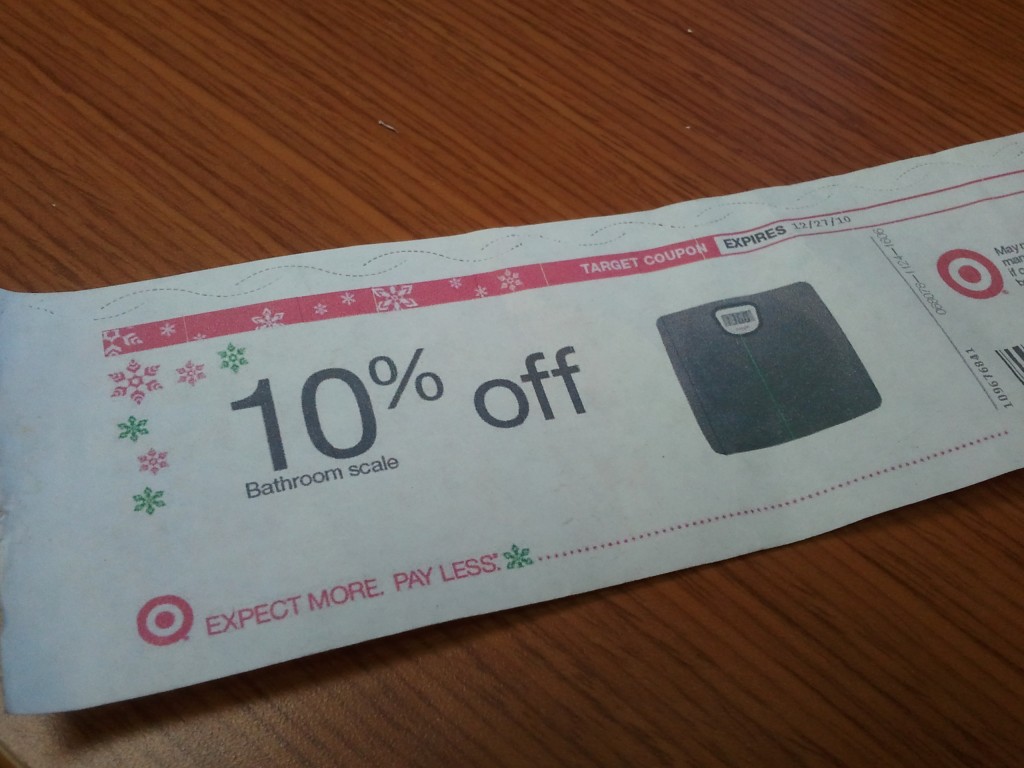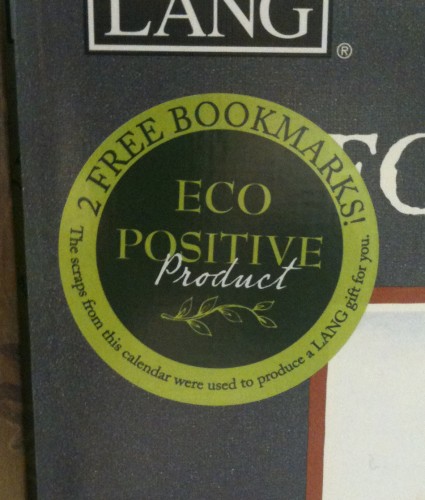Alys sent in a photograph of the packaging at her local McDonald’s. It included pictures, not of Chicken Clubs and Big Macs, but of the raw ingredients that these foods are (theoretically) made of… with the notable exception of realistic images of animals. The materials, Alys writes, were…
…adorned with pictures of healthy whole foods, such as a tomato or a head of lettuce. That in itself is interesting — they are clearly attempting to cash in on the whole-foods-are-good-for-you mentality despite the fact that there is hardly anything more processed than fast food — but what I found particularly fascinating was the animals, or rather the lack thereof. My chicken club sandwich package featured not a live chicken, but two little origami chickens. Similarly, the bag the food came in had a tin chicken knick-knack thing. My husband’s hamburger package was even more ambiguous. It’s a little hard to read in the picture, but “two all beef patties” is represented not with a cow, or a picture of the patties, or even an origami cow, but with a spatula. Clearly MacDonalds realizes that while Americans want to be reminded that the ketchup on their sandwich originally came from a tomato — and that means it’s healthy! — they do not want to look into eyes of the live animal that sacrificed its life to provide the main focus of the meal.
Lisa Wade, PhD is an Associate Professor at Tulane University. She is the author of American Hookup, a book about college sexual culture; a textbook about gender; and a forthcoming introductory text: Terrible Magnificent Sociology. You can follow her on Twitter and Instagram.















